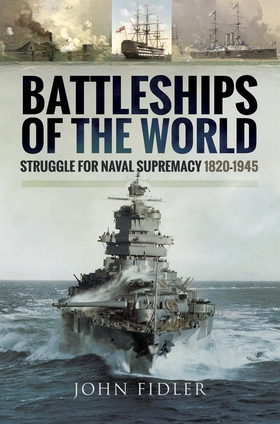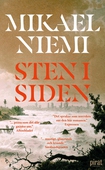
Lägg till önskelistan
Battleships of the World e-bok
Pris
119 kr
The battleships of the world’s navies in the 1820s were descended directly in line from the Revenge of 1577: they were wooden-built, sail-powered and mounted guns on the broadside, firing solid shot.
In the next half century, steel, steam and shells had wrought a transformation and by 1906, Dreadnought had ushered in a revolution in naval architecture. The naval race between Britain and Germany that followed, led to the clash of the navies at Jutland in 1916. Though this was indecisive...
E-Bok
119 kr
Pris
Förlag
Pen and Sword
Utgiven
4 Augusti 2021
Längd
160 sidor
Genrer
Historia & Arkeologi, Samhälle Och Politik, Fackböcker
Språk
English
Format
epub
Kopieringsskydd
Vattenmärkt
ISBN
9781473871489
The battleships of the world’s navies in the 1820s were descended directly in line from the Revenge of 1577: they were wooden-built, sail-powered and mounted guns on the broadside, firing solid shot.
In the next half century, steel, steam and shells had wrought a transformation and by 1906, Dreadnought had ushered in a revolution in naval architecture. The naval race between Britain and Germany that followed, led to the clash of the navies at Jutland in 1916. Though this was indecisive, the German navy never again challenged the Grand Fleet of Britain during the war, and eventually the crews refused to put to sea again.
Disarmament on a massive scale followed, but the battleship was still regarded as the arbiter of sea-power in the years between the wars. However, the advocates of air power were looking to the future, and when in 1940 biplane Swordfish torpedo bombers of the Fleet Air Arm sank three Italian battleships at their moorings in Taranto, the Japanese sensed their opportunity. Their attack on the American Pacific fleet base at Pearl Harbor sank eight battleships – but the American carriers were at sea, and escaped destruction.
Given the distances involved, the Pacific war was necessarily a carrier war, and in the major actions of the Coral Sea, Midway, Leyte Gulf and the Philippine Sea, all the fighting was done by aircraft, with battleships reduced to a supporting role.
Soon after the war ended, most were sent for scrap, and a naval tradition had come to an end.
EPUB3: Reflowable





